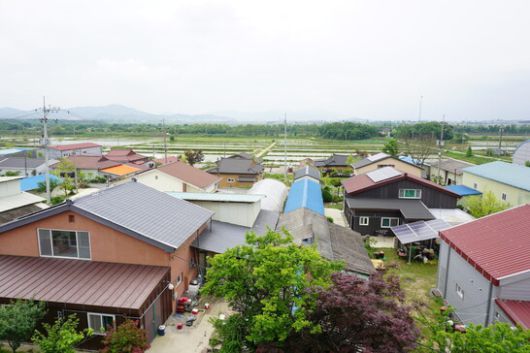 |
(CHA) |
The Cultural Heritage Administration on Tuesday announced the discovery of two articles of stoneware from the Paleolithic Age and other relics in Daeseong-dong of Paju, Gyeonggi Province.
This was CHA’s first survey inside the Demilitarized Zone since drawing up a plan in March to seek UNESCO listing of the DMZ.
“It is hard to say that the findings will have a direct influence on UNESCO listing,” CHA official Cho Eun-kyung told The Korea Herald. “The UNESCO makes evaluations based on outstanding universal value. For now, it is hard to say that we will claim DMZ’s value with stoneware found in the area.”
“We began our research there because it is the only village inside the DMZ where people live. The research is still meaningful in that we could find several relics from different periods,” she added.
The DMZ, which divides the Korean Peninsula into the South and North, is approximately 4 kilometers wide and stretches 248 kilometers. The total area is estimated to be about 1 1/2 times the size of Seoul.
Along with the stoneware, relics from other eras, such as the head of a dragon-shaped accessory from Unified Silla to artifacts from the Joseon era have been unearthed as well.
“Although the majority of the relics are from Goryeo era, the two pieces of stoneware are most notable as they were not expected to be found in the area,” Choi said.
CHA noted that the diamond-shaped stoneware was likely used for hunting. It also added that a similar piece of stoneware was found in 2004 at the site of the inter-Korean Kaesong industrial park in North Korea.
“We expect that there will be higher possibility of finding meaningful results if the inspection of Paleolithic Age stoneware can be done jointly with North Korea, there is higher possibility for finding some meaningful results,” Cho said.
CHA surveyed the Daeseong-dong area four days from May 26 to 29. The administration said it expects to find more stoneware and relics if additional archaeological surveys are conducted in the area.
The administration also interviewed some of the villagers living in Daeseong-dong to investigate environmental changes that have taken place since the Korean War.
A field survey of the DMZ will continue until May next year.
By Song Seung-hyun (
ssh@heraldcorp.com)








![[Today’s K-pop] Blackpink’s Jennie, Lisa invited to Coachella as solo acts](http://res.heraldm.com/phpwas/restmb_idxmake.php?idx=644&simg=/content/image/2024/11/21/20241121050099_0.jpg)